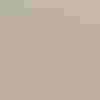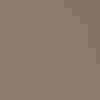

How to Create a Hummingbird-Friendly Yard
Hummingbirds are truly remarkable and fascinating creatures. A diverse family, hummingbirds include the world's smallest bird, the Bee Hummingbird of Cuba, and some of the strongest migrants. The Rufous Hummingbird undertakes the longest avian migration in the world, if based upon distance traveled in proportion to body size. To sustain their supercharged metabolisms, hummingbirds must eat once every 10 to 15 minutes and visit between 1,000 and 2,000 flowers per day.
Those hefty appetites were the focus of Hummingbirds at Home, a community science program run by Audubon from 2013 to 2021. Wanting to help these amazing birds, participants in Audubon’s Hummingbirds at Home observed hummingbirds and their insatiable feeding, and reported their observations to the program.
One goal of Hummingbirds at Home was to learn more about hummingbird feeding habits from a variety of nectar sources. From this, Audubon scientists studied how this reflects the changing climate’s impacts on hummingbirds and their habitats. As plant bloom times change in response to climate change, do hummingbirds adapt to feed from other nectar plants?
We received thousands of feeding reports that are an important first step to understanding the important relationship between hummingbirds and their food sources. Over the program's run, 21 hummingbird species were reported to Hummingbirds at Home as well as 371 identified blooming plant species. Results from 2013 to 2018 were published in the peer-reviewed journal Landscape and Urban Planning in 2020.
Interested in some of the initial findings? Here are some of the most commonly reported native plants through Hummingbirds at Home:
Beebalms
- Beebalm, Wild bergamot, Horsemint, Monarda fistulosa
Native in southwest, Pacific northwest, mountain west, southeast, east and mid-west sections of the U.S.
- Lemon beebalm, Monarda citriodora
Native to California, southwest and southeast sections of the U.S.
- Scarlet beebalm, Monarda didyma
Native to the Pacific northwest, east and mid-west sections of the U.S.
- Spotted beebalm, Monarda punctata
Native to California, New Mexico, Texas, southeast, east and mid-west sections of the U.S.
- Coral honeysuckle, also known as Trumpet honeysuckle, Lonicera sempervirens
Native to the southeast, east and mid-west sections of the U.S.
- Cardinal flower, Lobelia cardinalis
Native to California, the southwest, southeast, east and mid-west sections of the country
Sages
- Scarlet sage, Salvia coccinea
Native to the southeast U.S.
- Lemmon's sage, Salvia lemmonii
Native to the southwest U.S.
- Gregg sage, Salvia greggii
Native to Texas
- Pitcher sage/Hummingbird sage, Salvia spathacea
Native to California
These native plant groups can have a variety of species that span the country. You can learn about recommended native plants that attract hummingbirds here.
How to Invite Hummingbirds to Your Yard
You can attract, feed and nourish hummingbirds in your backyard with a few easy steps. Flowers, perches, insects, and water are the key ingredients to a healthy yard that will attract these amazing jewels.
Flowers
Hummingbirds are specialized for nectar-eating, evident by long bills and grooved tongues ideal for probing flowers. Sugary nectar supplies fast energy and makes up 90 percent of a hummingbird's diet. Unfortunately, due to development and climate change, hummingbird-friendly habitat may be changing across many hummingbird migration routes. You can create a healthy environment for hummingbirds with these steps:
- Fill your yard with native flowering plants, vines, shrubs, and trees. To create a customized list of bird-friendly native plants for your area and get connected to local native plant resources, check out our native plants database. Even one plant in a window box or hanging basket can help.
- Grow native plants like trumpet honeysuckle, bee balm, and hummingbird sage, which provide much more nectar than hybrids and exotics.
- Plant native red or orange tubular flowers to attract hummingbirds, in addition to native plants rich in nectar.
- Group similar plants together and choose species with different blooming periods so that there will be a steady supply of flowers nearly year round.
- Leave some sticks and small branches on bushes and trees to enable ready perches for hummingbirds.
- Minimize or eliminate the use of pesticides in your yard.
- Encourage your neighbors to make their yards hummingbird friendly. An entire corridor of habitat is much more valuable than scattered patches.
Planting for Nesting Hummingbirds
Hummingbirds prefer to nest near a ready supply of nectar and other food, and you can encourage them to nest in your yard by maintaining some shrubbery and small deciduous trees in which they can seek protective cover, especially around the edges of your yard. They build their tiny, expandable nests on tree limbs and other small horizontal surfaces, often constructing them from lichens and spider webs.
Perches
Make sure you have plenty of safe places for hummingbirds to rest and sleep in your yard. Hummingbirds often perch to rest or survey their territory; some spots should be in the open and obvious for territorial birds, while others should be in protected areas, hidden from view and buffered from any cooler overnight temperatures.
Insects
Hummingbirds need protein from pollen and insects to maintain their bodies and grow new feathers. Like swifts, hummingbirds are specialized aerial hunters and can snatch small insects from the air. Hummingbirds also glean insects from leaves and from spider webs. To maintain a healthy ecosystem in your yard:
- Eliminate pesticides. Spiders and insects (arthropods) are an important part of an adult bird's diet, and young hummingbirds still in the nest are almost exclusively fed arthropods.
- Make sure your yard contains insect-pollinated flowers as well as hummingbird-pollinated plants.
- Hang a basket with overripe fruit or banana peels close to a hummingbird feeder to attract tiny fruit flies.
- Use native plants. Doug Tallamy's research (in Bringing Nature Home) has detailed that native plants will support a greater concentration of insects and spiders available as prey for hummingbirds and other birds, than do alien ornamentals.
Water
Hummingbirds like to bathe frequently—even in the pools of droplets that collect on leaves. Provide your yard with a constant source of water from a drip fountain attachment or a fine misting device. A misting device is an especially attractive water source for hummingbirds.
Nectar Feeders (or, Hummingbird Feeders)
Backyard hummingbird feeders provide hummingbirds with nectar critical to their survival, especially during fall and spring migration. Follow these steps to ensure your yard is a safe and nutritious stopover for hummingbirds:
- Hang several feeders far enough apart that the hummingbirds cannot see one another; this will prevent one bird from dominating the rest.
- Fill the feeders with sugar water, made by combining four parts hot water to one part white sugar, boiled for one to two minutes. (Click here for full recipe.) Never use honey, artificial sweeteners, or red dye.
- Hang your feeders in the shade to prevent the sugar solution from fermenting.
- Be sure to change the sugar water regularly -- before it gets cloudy, or about twice a week in warm weather.
- Clean the feeders with a solution of one part white vinegar to four parts water about once a week. If your feeder has become dirty, try adding some grains of dry rice to the vinegar solution and shake vigorously. The grains act as a good abrasive.
- Rinse your feeder well with warm water three times before refilling with sugar solution.
- Check eBird to find out when the first hummingbird sightings occur each spring, and hang your feeders up a couple of weeks before that. In the fall, keep your feeders up for two weeks after you see the last bird using it.
Get Audubon in Your Inbox
Let us send you the latest in bird and conservation news.




